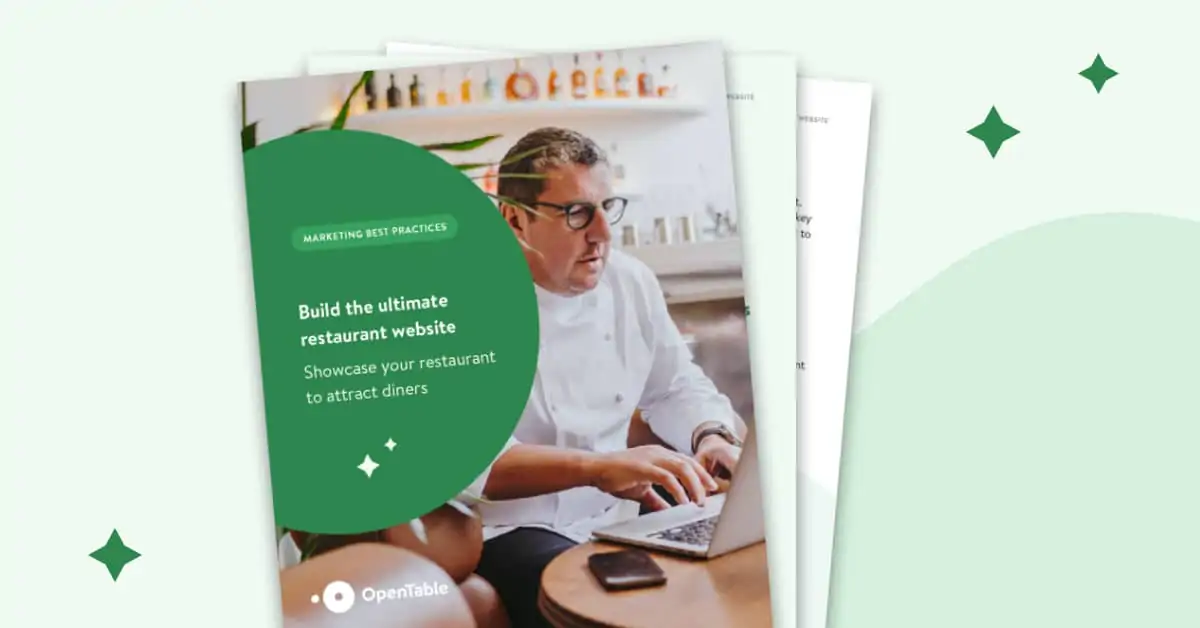Making strategic decisions about a restaurant can be a complicated task. But data tells the real story behind the scenes. Understanding the inner workings of a restaurant through real-time analytics can be the key to improving a restaurant business. Whether analysing numbers is all new to you or you’re a seasoned pro, optimising restaurant data can boost revenue, improve customer satisfaction, and get more butts in seats.
Here’s what every restaurateur needs to know about restaurant analytics:
What are restaurant analytics?
When breaking down what data you should be looking at, it’s best to start by understanding the difference between restaurant reporting and restaurant analytics.
Reporting focuses on a chunk of restaurant data, usually within a short and specific period of time. For example, it can be used to compare sales and profits from this month and last. It’s great information to have, but is most valuable when observed through a specific lens, such as a precise time period or restaurant location.
Analytics, on the other hand, look at the big picture by asking questions about the data and interpreting it. Rather than providing just one data point, they combine multiple sets of raw data to create cohesive insights for every aspect of a restaurant. Instead of looking at just sales and profits, analytics allows you to dig deeper into a specific day or even hour to decipher the restaurants’ most profitable times.
Using and understanding your analytics
Keeping those definitions in mind, consider how analytics can benefit restaurant growth. With current technologies, analytics can assist in gathering, measuring, and organising every piece of information within a restaurant—from guest information and staff performance to food waste and labor costs.
1. Minimise food waste
In an industry that spends an estimated 494 billion Australian dollars since 2019 in costs related to wasted food, according to a report from ReFED, reducing this spend is always top of mind. Combining a predictive analytics solution and the restaurants’ online ordering system system can improve order accuracy and reduce overall waste. By forecasting which menu items will be in demand during specific hours of the day, analytics allow you to adjust the restaurants’ inventory and future orders accordingly, reducing waste and saving you money.
2. Improve the guest experience
Enhancing your guest experience can be as simple as gathering diner data. A restaurant reservation system can help compile personalise details including, birthdays, allergies, and many other preferences. In tandem, a POS (point of sale) system can pull in guest information, including popular dishes and ticket size per customer. Many reservation platforms are compatible with select POS systems and can be a great way to keep all of your data in one place.
By looking at this information holistically, a restaurant can review demographics, reservation habits, and other ordering preferences, and use this information to turn one time guests into repeat business. Consider sending a complimentary allergy-friendly dessert on a birthday or special occasion while simultaneously assessing comp costs to ensure the costs don’t outweigh the benefits long term. If analytics are showing high no-show rates, think about adding in a reservation deposit. Or if you’re looking to pull in more guest data, try pairing a loyalty program with restaurant analytics to see what guests value most.
3. Optimise staffing needs
Get a jump on shift planning by using analytics to plan the weeks ahead. Looking at a restaurants’ busiest days and order volume over time can be a great predictor for staff scheduling. Using insights to define a restaurants’ rush can demonstrate how much a restaurant should be spending on labor during that peak—allowing you to cut back on labor costs while reducing the risk of being understaffed. Consider examining your seasonal trends as well and schedule a mix of part-time, full-time, and temporary hires year round to meet demand.
Understanding your staff at a high level can lead to lower employee turnover. Restaurant analytics can track employee performance, providing you the opportunity to check in with staff to ensure high performance and job satisfaction. If one server is performing exceptionally well, consider having them mentor a fellow employee. They’re a great resource for any VIPs that come to dine.
Take the time to look into any areas that could be streamlined. If there’s an area of the floor where staff is repeatedly held up, consider reworking the layout. Listening to employees is a great way to improve morale, but using analytics to keep things efficient can also build a healthy environment.
4. Forecast trends for future success
The future may not be set in stone, but analytics can help you picture where it might end up. Predictive analytics can compare historical performance with a restaurants’ current numbers to paint a picture of where you’ll be at in a few years. Understanding potential revenue can allow you to strategise new goals and expectations while optimising current tactics.
Take menu insights, for example. Without analytics, you might assume that a restaurants’ best selling item is the most profitable. It might be this year, but the rising cost of an ingredient over time could change that. Examining trends within your menu can additionally improve profitability of certain items. If one dish is pushing guests to return, train servers to promote it or highlight it on the menu.
Once you understand how analytics can streamline restaurant operations, the next step is to figure out what system is right for you. The great news is that many POS systems come equipped with analytics tools. When picking a system—or maximising one that is currently in place—there are a few things to consider. Opt for a mobile system for maximum accessibility, confirm that it’s reputable and secure, and ensure that it’s able to gather all the data you’re looking for.
5. Benchmark performance
While a restaurant’s historical data provides a window into past operational performance, benchmarking key metrics against industry averages offers a helpful perspective. For important indicators of a restaurant’s health—like sales per square foot, transactions handled per labour hour, product and labour cost percentages of revenue, and staff turnover rate—comparing your restaurant’s numbers to regional or national averages for your restaurant category allows an apples-to-apples evaluation.
If your restaurant lags behind on key benchmarks, it clearly signals room for improvement in those areas of operations. If you exceed industry numbers, hammering down the unique attributes that set your restaurant apart paves the way to keep widening your competitive advantage. Restaurateurs who make a habit of regularly checking their stats against benchmarks will quantify operational wins—and quickly detect problem spots that may escape day-to-day notice onsite.
6. Listen to customer sentiment
The hard numbers provide a tangible direction, but customer subjective feedback shouldn’t be ignored when assessing total restaurant performance. Monitoring online review sites and sending post-meal surveys allows a restaurant to track satisfaction scores over time while drilling down on pain points commonly aired by their guests.
Recurring complaints around slow service speeds or inaccurate orders lend credence to issues unearthed in staffing numbers and inventory reports. Patterns in customer commentary can also unmask weak spots that might not immediately be apparent from data, like confusing menu item descriptions, food inconsistencies from the kitchen or bottlenecks in the customer journey.
Rectifying such problems highlighted in customer sentiment metrics leads to better customer encounters. This drives higher satisfaction scores and brightens a restaurant’s online reputation, organically attracting new diners through positive word-of-mouth. Existing guests enjoying more seamless visits convert to repeat diners. For restaurateurs, the numbers tell an important story, but coupling analytics with customer feedback tells the whole story toward a better understanding of total restaurant performance.
Summary: Restaurant analytics
Understanding a restaurants’ analytics doesn’t have to be a headache. In fact, properly implemented strategies should help the restaurant run more efficiently, improve overall staff happiness, and create stronger relationships with guests. Decide which methods are right for your restaurant, but feel confident in trying out new techniques—the analytics will confirm what works and how to find the perfect solution for success.




